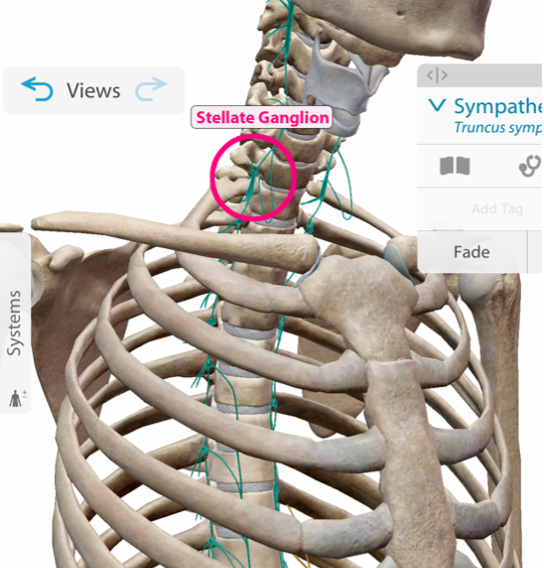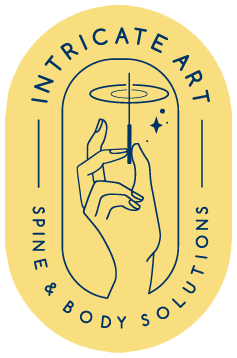
Upper Extremity Neuropathy: Stellate Ganglion Hyperactivity & Upper Extremity Neuropathy, Secondary to Thoracic, lumbar, sacral, or coccygeal Pathology
UE radicular symptoms, without cervical or UE pathology, may be a frustrating thing to figure out. This is because the thoracic, lumbar, sacral, or coccygeal spines can indirectly stimulate UE radicular symptoms. The sympathetic chain sits on the anterior aspect of the transverse processes and travels from the upper cervical spine to the coccyx. This is a primary mediator of the sympathetic portion of the autonomic nervous system (SANS).
The sympathetic trunk has about 23 ganglia. The stellate (star) ganglion produces sympathetic efferents to the UE’s, head, neck, and heart. It sits just on the anterior aspect of the first rib and its connection at C7/T1. If anything happens to muscles or joints anywhere along the sympathetic chain, enough to place excessive tension on the stellate ganglion, unusual UE radicular symptoms may ensue. Headaches, heart palpitations and dizziness are just a few other impairments stellate ganglion pathology can elicit.
Remember, the stellate ganglion is primarily a SANS control center. Aggravation and inflammation of this ganglion causes SANS hyperactivity. SANS hyperactivity leads to dysfunction of the hypothalamic-pituitary-adrenal (HPA) axis and the gut-brain axis (enteric nervous system + brain), both parts of the ANS. Without homeostasis of these two axes, our hormones, immune system, neurotransmitters, peptide, etc., all become dysregulated. This leads to nothing good.
The fastest, easiest way I find to reduce tension on the sympathetic chain is to the needle the multifidus, iliopsoas and QL’s, along with any other tight stuff you find, and then manipulate the entire spine back to neutral. Make sure to add needles to the concha of the ears, S2-S4, and the base of C2 spinous process. These are the 3 best areas to target the PANS, the concha of the ear being the most direct. Since the stellate ganglion is a SANS control center and becomes hyperactive under tension, specifically targeting the PANS, along with addressing the tension on the chain, will lead to success.
Don't hesitate to reach out with any questions!
Related: Check out our other blogs here
Jason



